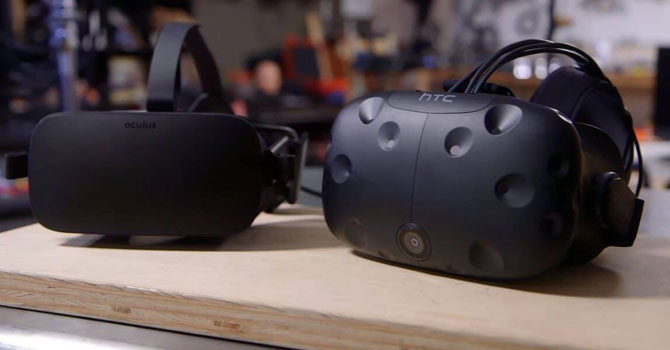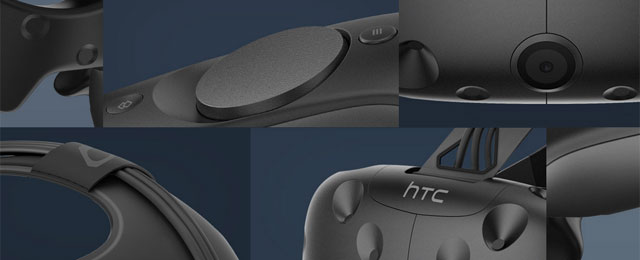All HD Categories
- Amateur (33)
- Anal (44)
- Art Porn (38)
- Asian (39)
- Babes (10)
- BBW (14)
- BDSM (17)
- Blowjobs (32)
- Boobs (26)
- Casting Porn (21)
- Creampies (8)
- Deep Insertions (19)
- Ebony/Interracial (20)
- Facial Cumshots (18)
- Femdom (19)
- Fetish (40)
- Gay Porn (24)
- Group Sex (21)
- Handjobs (9)
- Hardcore (18)
- Hardcore Euro (30)
- Latina (9)
- Leg/Feet Fetish (19)
- Lesbian (45)
- Massage Sex (14)
- Mature/MILF (38)
- Mega Sites (29)
- Network (36)
- Old/Young (18)
- Petite (11)
- Pornstars (23)
- POV (23)
- Reality (62)
- Softcore (25)
- Solo Girls (21)
- Solo Girls Hard (21)
- Step Porn (21)
- Threesomes (14)
- Toys/Insertions (37)
- Tranny (20)
- Voyeur (28)
- VR Porn (14)
- Wet/Messy (10)
- Young Women (50)

Price
Starting with the price, the HTC Vive and the Oculus Rift differ greatly. The HTC Vive is priced at $800, while the Oculus Rift is priced at $600. This is a big difference, but there are additional expenses to consider.Later in 2016, the Oculus Rift will have motion controllers and room-scale VR sensors for sale that will cost an additional amount, while the HTC Vive includes motion controllers. Taking into account the cost of the motion controllers that you might chose to buy for the Oculus Rift, the prices of the two headsets will be much closer than they initially appear
Display and Resolution
Overall, both the HTC Vive and the Oculus Rift offer an immersive and completely out-of-this-world virtual reality experience. What makes both of these VR headsets special is that their displays each consist of two OLED panels that have a 2160 x 1200 resolution, meaning that each eye views a resolution of 1080 x 1200.
In addition, they both have the same refresh rate of 90Hz. This is much better than the Samsung Gear VR's refresh rate of 60Hz. This allows for 233 million pixels to be viewed per second. In this sense, their display and resolution specs are virtually identical.
Field of View / Tracking Area / Sensors
Both also have 110 degree field of view, which is much wider than the competition's, allowing you to truly immerse yourself in the VR world. However, the tracking area of the Oculus Rift is 5 x 11 feet, while the tracking area of the HTC Vive is 15 x 15 feet. The difference in the tracking areas between them is due to the differences in their respective sensors.
The HTC Vive has a accelerometer, gyroscope, laser position sensor, and front-facing camera, while the Oculus Rift has an accelerometer, gyroscope, magnetometer, and 360-degree positional tracking.

The use of a front-facing camera by the HTC Vive means that, through the positioning of two lighthouse base stations that emit lasers, users can use the "chaperone" system to walk around safely. That's because users will be able to view real-world objects by pressing a button, which will place a blue outline on walls and objects when you move too close to them.
However, it doesn't have the 360-degree positional tracking of the Oculus Rift. Basically, the Oculus Rift has been designed for more of a sit down experience, while the HTC Vive is designed more for those who wish to walk around.
Software
Both the HTC Vive and the Oculus Rift have an abundance of software, games, and apps available for them, but the difference is that the HTC Vive use Valve's Steam platform and the Oculus Rift uses the Oculus Rift store. Think of this as being similar to the Apple App Store in comparison to the Google Play Store.
The HTC Vive and the Oculus Rift are two powerful VR headsets with similar hardware specs, with the most notable differences between them being in the two tracking systems and the fact that the HTV Vive comes with motion controllers from the very beginning.
Featured Review
 Kelly Madison >> 9.8 Kelly Madison continues to absolutely dominate an empire of mature, stacked women that have a handle on fucking, directing and starring in hardcore fantasy styled porn. Ryan and Kelly Madison may be the top producers in delivering some of the best fantasized sex for our generation!
Kelly Madison >> 9.8 Kelly Madison continues to absolutely dominate an empire of mature, stacked women that have a handle on fucking, directing and starring in hardcore fantasy styled porn. Ryan and Kelly Madison may be the top producers in delivering some of the best fantasized sex for our generation!



